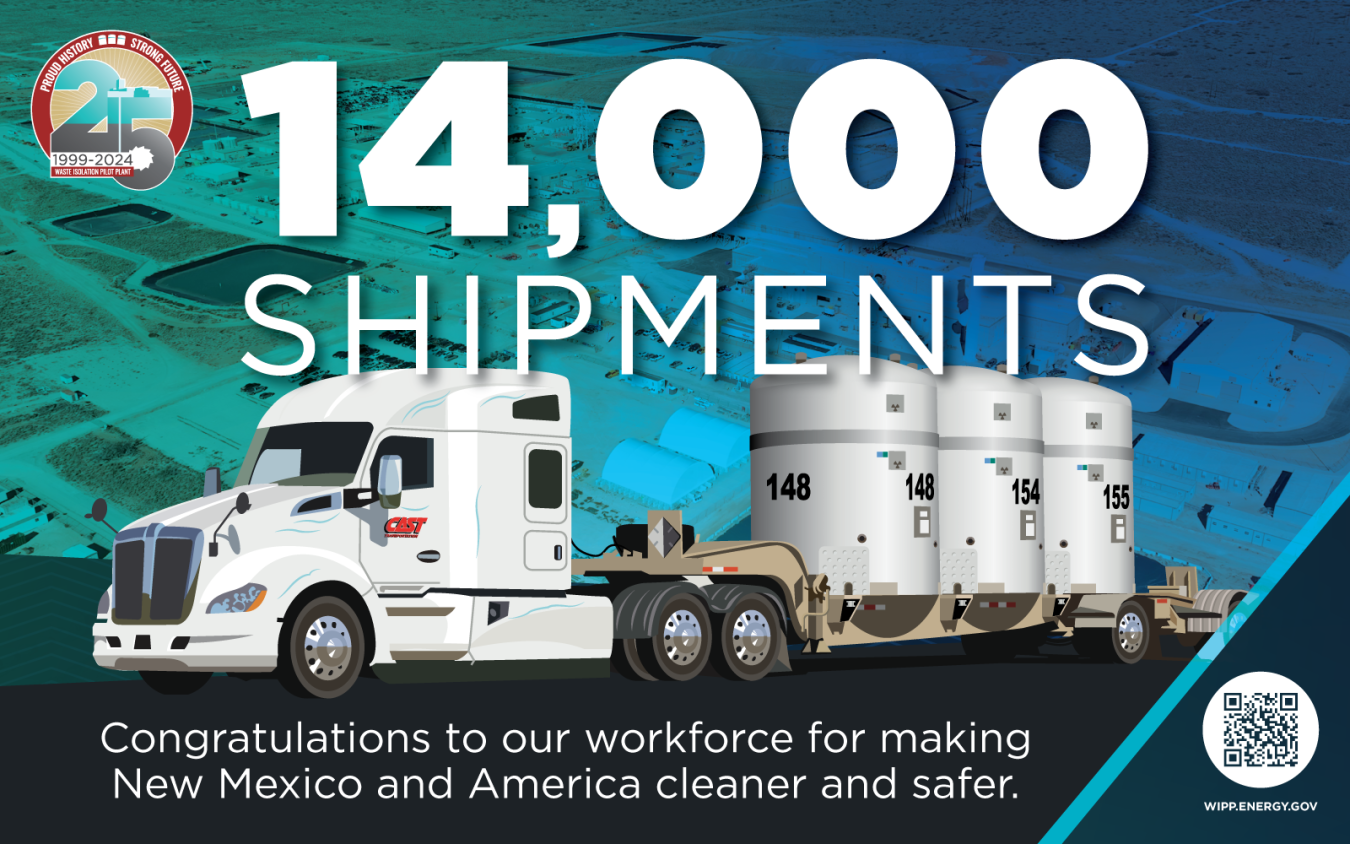The U.S. Department of Energy (DOE) Office of Environmental Management (EM) recently crossed a major milestone: the 14,000th shipment of defense-generated transuranic (TRU) nuclear waste was delivered to its Waste Isolation Pilot Plant (WIPP) and emplaced in the underground repository.
Office of Environmental Management
July 2, 2024
CARLSBAD, N.M. — The U.S. Department of Energy (DOE) Office of Environmental Management (EM) recently crossed a major milestone: the 14,000th shipment of defense-generated transuranic (TRU) nuclear waste was delivered to its Waste Isolation Pilot Plant (WIPP) and emplaced in the underground repository.
“This marks an important milestone in our mission to clean up the country’s legacy waste dating back to World War II and Cold War eras. Achieving 14,000 shipments is the result of the hard work and dedication of the WIPP employees, as well as the staff at all the cleanup sites,” said Mark Bollinger, EM Carlsbad Field Office manager. “It also reflects DOE’s continued focus on safely and compliantly cleaning up the environment for future generations.”
EM has successfully cleaned up TRU waste from 22 nuclear production sites across the U.S., reducing risk for millions of Americans and the environment.
TRU waste, a byproduct of the nation’s nuclear defense program, consists of materials like clothing, rags, tools, gloves, debris and residue leftover from handling items with radioactive properties. At the generator sites, these items are packaged and then secured inside TRUPACT containers, which are solid, shielded vaults. The waste is then transported to the WIPP underground repository and emplaced in perpetuity.
Every WIPP shipment meets all U.S. Department of Transportation requirements, and must pass an inspection to ensure the shipment is fully free of defects when it departs the generator site. WIPP’s driver teams are highly trained and must meet stringent requirements prior to transporting a shipment. Shipment protocols were developed through cooperative efforts with states, tribal governments and DOE. All shipments are monitored and tracked using a satellite tracking system. To date, WIPP drivers have logged more than 16.5 million safe loaded miles.
“The employees who transport these shipments from the generator sites to WIPP deserve a lot of credit,” said Tammy Hobbes, vice president and operations/National TRU Program manager with Salado Isolation Mining Contractors, WIPP’s management and operations contractor. “Their attention to detail and focus on safety has a direct correlation to the success of WIPP.”
-Contributor: Bobby St. John
To receive the latest news and updates about the Office of Environmental Management, submit your e-mail address.

